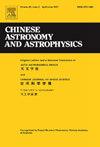The Experiment and Analysis on VLBI Observations of Space Passive Hydrogen Maser
Abstract
China plans to establish a lunar orbital VLBI (Very Long Baseline Interferometer) station around 2025, which will carry a space passive hydrogen maser as the time and frequency reference. Since it is the first time to use a space passive hydrogen maser for VLBI observation, its feasibility needs to be studied and verified. Therefore, we carried out VLBI observations using the space passive hydrogen maser as the frequency reference. In the experiment, the active hydrogen atomic clock and space passive hydrogen maser were used as the frequency standard, and the alternate VLBI observations of China’s Mars probe TW1 (Tianwen 1) were carried out using the 25 m radio telescope at Sheshan, Shanghai, and other VLBI stations. The results of data processing and analysis show that the standard deviation of VLBI residual group delay based on both active hydrogen atomic clock and space passive hydrogen maser are within 0.5 ns, which indicates that the space passive hydrogen maser can meet the accuracy requirements of VLBI measurement for deep space exploration, and verify its feasibility as the frequency standard of lunar orbital VLBI stations.

 求助内容:
求助内容: 应助结果提醒方式:
应助结果提醒方式:


